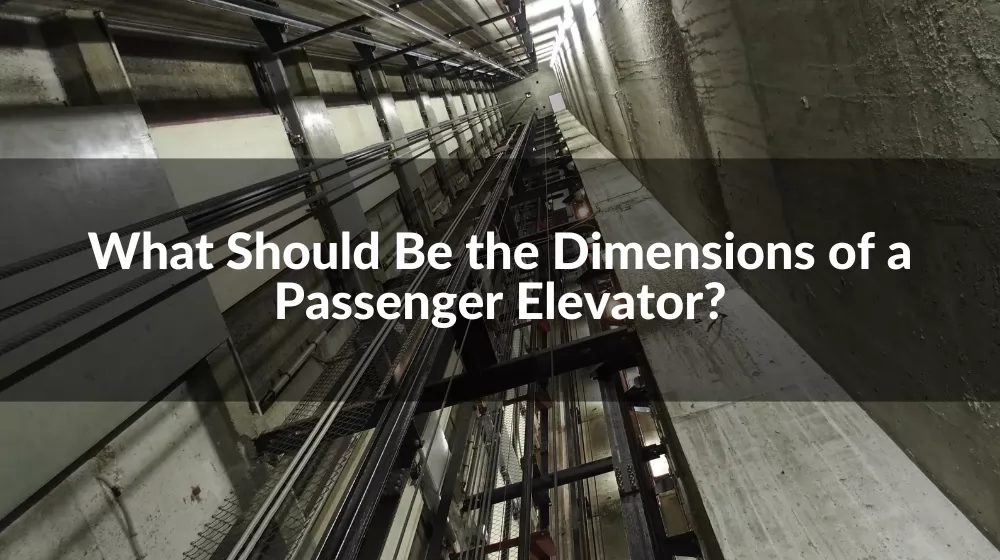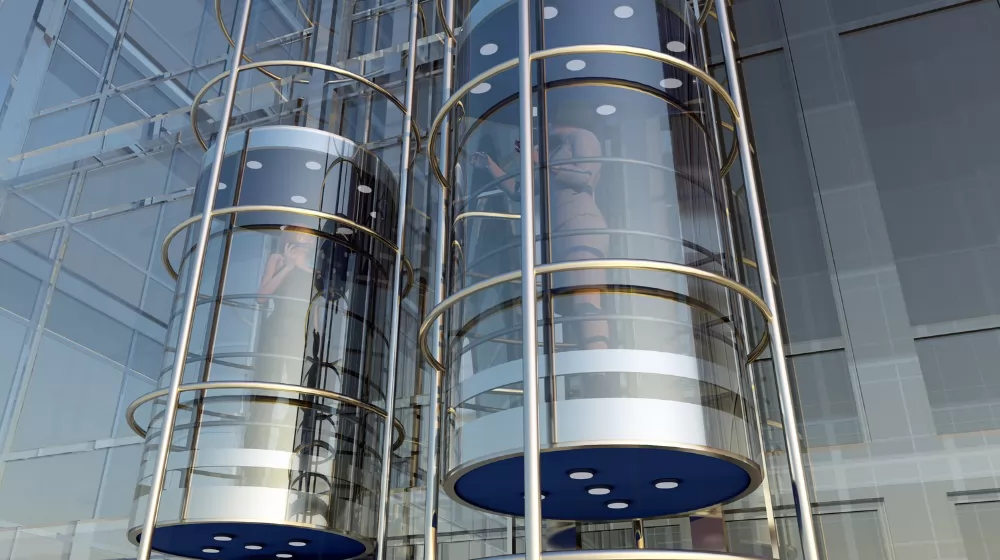
Elevators are a crucial aspect of modern building design. They make it easier to move between floors, save time, and improve accessibility. Therefore, it is essential to have the right dimensions of the passenger elevator, which depends on various factors such as the building's height, occupancy, and purpose. In this article, we will discuss the different types of passenger elevators, their carrying capacity, and their dimensions. We will also explore the compliance requirements for commercial elevators and how to get the ideal size elevator.
Types of Passenger Elevators
Before we delve into the dimensions of passenger elevators, it is essential to understand the different types of passenger elevators available.
-
Hydraulic elevators: These are the most commonly used elevators in low-rise buildings. They are cost-effective, require less space, and have a carrying capacity of up to 5000 pounds.
-
Traction elevators: These are the most common type of elevators used in mid-rise and high-rise buildings. They have a carrying capacity of up to 5000 pounds and use cables and counterweights to move the elevator car.
-
Machine-room-less elevators: These are traction elevators that do not require a separate machine room. They are energy-efficient, take up less space, and have a carrying capacity of up to 2500 pounds.
-
Pneumatic elevators: These are cylindrical elevators that use air pressure to move the elevator car. They are suitable for low-rise buildings and have a carrying capacity of up to 500 pounds.

Carrying Capacity of Passenger Elevator
The carrying capacity of a passenger elevator depends on various factors, such as the number of floors in the building, the occupancy, and the intended use. The International Building Code (IBC) provides guidelines for determining the carrying capacity of an elevator.
For instance, the IBC recommends a minimum capacity of 150 pounds per person for an elevator in an office building. Therefore, if the average weight of a person is 150 pounds, a passenger elevator with a carrying capacity of 2000 pounds can accommodate up to 13 people.
It is important to note that the carrying capacity of a passenger elevator should not be exceeded, as it can lead to safety hazards.
Dimensions of Passenger Elevator
The dimensions of a passenger elevator depend on various factors, such as the carrying capacity, the number of floors in the building, and the intended use. The minimum dimensions recommended by the Americans with Disabilities Act (ADA) for a passenger elevator that can accommodate a wheelchair are 36 inches by 60 inches.
Additionally, the IBC provides guidelines for the minimum dimensions of a passenger elevator. For instance, a passenger elevator in an office building should have a minimum clear floor area of 15 square feet, with a minimum width of 36 inches and a minimum depth of 48 inches.
It is important to note that the dimensions of a passenger elevator should be designed to accommodate the intended use, such as moving large equipment or furniture.

Dimensions of Sightseeing Elevator
Sightseeing elevators are designed to provide a panoramic view of the surroundings, such as in hotels or observation decks. The dimensions of a sightseeing elevator depend on the intended use, the occupancy, and the number of floors in the building.
The IBC provides guidelines for the minimum dimensions of a sightseeing elevator. For instance, a sightseeing elevator in a hotel should have a minimum clear floor area of 15 square feet, with a minimum width of 42 inches and a minimum depth of 54 inches.
Dimensions of the Elevator Shaft
The dimensions of the elevator shaft depend on the dimensions of the passenger elevator, the intended use, and the building's height. The IBC provides guidelines for the minimum dimensions of the elevator shaft. For instance, the minimum width of an elevator shaft should be at least 4 feet, with a minimum depth of 6 feet for a hydraulic elevator, and a minimum depth of 8 feet for a traction elevator.
It is important to ensure that the elevator shaft's dimensions can accommodate the passenger elevator's dimensions and carrying capacity and comply with safety regulations.

Elevator capacity requirements
Determining the elevator capacity requirements is crucial to ensure that the elevator can efficiently move people and equipment in the building. The International Code Council provides guidelines for determining the minimum elevator capacity required based on the building's occupancy and the number of floors.
For instance, the IBC recommends a minimum elevator capacity of 1500 pounds for a building with a maximum occupancy of 50 people and up to three floors. Buildings with higher occupancy and more floors require a higher elevator capacity.
Compliance for Commercial Elevators
Commercial elevators must comply with safety regulations and guidelines to ensure the safety of passengers and prevent accidents. The regulatory agencies that govern elevator safety regulations include the American Society of Mechanical Engineers (ASME) and the National Elevator Industry, Inc. (NEII).
The ASME provides guidelines for elevator safety codes, such as the ASME A17.1 code, which covers the design, construction, installation, operation, inspection, testing, maintenance, alteration, and repair of elevators. The NEII provides guidelines for elevator safety standards and best practices.
It is important to ensure that the commercial elevator complies with safety regulations and undergoes regular maintenance and inspection to prevent accidents and ensure passenger safety.
Get the Ideal Size Elevator
Achieving the ideal size elevator requires consideration of various factors such as the building's height, occupancy and intended use. It is essential to consult a local elevator manufacturer who can assess the needs of the building and advise on the ideal elevator size, capacity and dimensions.
Additionally, when choosing the ideal size elevator, it is important to consider the elevator's energy efficiency, maintenance, and compliance with safety regulations.
Hosting is a leading elevator manufacturer, and we can help you determine the ideal size elevator for your building's needs, energy efficiency and safety compliance. Contact us now!



